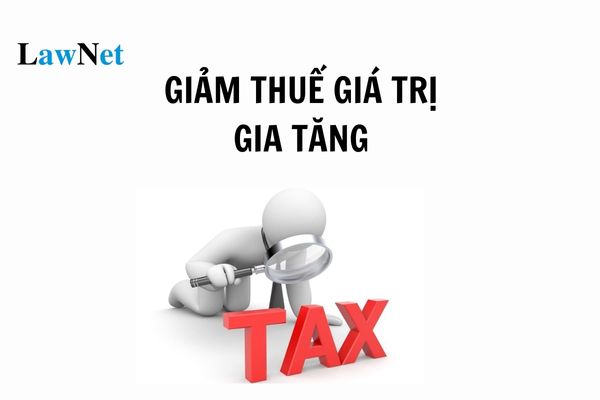Subject eligible for value-added tax reduction according to Decree 72: What are the regulations?
How are the subjects for value-added tax reduction procedures stipulated under Decree 72?
According to Clause 1, Article 1 of Decree 72/2024/ND-CP, subjects eligible for value-added tax (VAT) reduction include:
Goods and services groups currently applying a tax rate of 10%, except for the following groups of goods and services:
- Telecommunications, financial activities, banking, securities, insurance, real estate business, metals and products from pre-fabricated metal, mineral extraction products (excluding coal mining), coke, refined petroleum, chemical products. Details in Appendix I attached to Decree 72/2024/ND-CP
- Goods and services subject to special consumption tax. Details in Appendix II attached to Decree 72/2024/ND-CP
- Information technology according to IT laws. Details in Appendix III attached to Decree 72/2024/ND-CP
- VAT reduction for each type of goods and services as stipulated in Clause 1, Article 1 of Decree 72/2024/ND-CP is uniformly applied at the stages of import, production, processing, and commercial business. In the case of extracted coal sold (including coal that is extracted and subsequently screened, classified in a closed process before being sold), such items are subjects of VAT reduction. Coal is listed in Appendix I attached to this Decree, but for stages other than extraction sales, VAT is not reduced.
The procedure for VAT reduction as specified in Clause 3, Article 1 of Decree 72/2024/ND-CP shall be implemented as follows:
- For business facilities as specified in Point a, Clause 2 of this Article, when issuing VAT invoices for goods and services subject to VAT reduction, the VAT rate line shall state “8%”; VAT amount; and the total amount payable by the buyer. Based on the VAT invoice, the business selling goods and services declares the output VAT, and the business purchasing goods and services declares the input VAT deduction according to the reduced tax amount recorded on the VAT invoice.
- For business facilities as specified in Point b, Clause 2 of this Article, when issuing sales invoices for goods and services subject to VAT reduction, under the column “Total amount before reduction,” the full price of goods and services is recorded before the reduction, and under the “Total amount after reduction” line, it reflects the 20% reduced amount of the percentage rate on revenue, with a note: “reduced by... (amount) corresponding to 20% of the percentage rate for VAT calculation according to Resolution No. 101/2023/QH15.”
Note: Decree 72/2024/ND-CP regarding VAT reduction policy is only valid until December 31, 2024.
For more information: List of goods and services not eligible for VAT rate reduction here

Subjects eligible for VAT reduction and reduction rates under Decree 72: How are they stipulated?
What goods and services are subject to the 10% VAT rate?
Article 11 of Circular 219/2013/TT-BTC stipulates the types of goods and services subject to a 10% tax rate as follows:
10% Tax Rate
The 10% tax rate applies to goods and services not specified in Articles 4, 9, and 10 of this Circular.
The VAT rates mentioned in Articles 10 and 11 apply uniformly to each type of goods and services at the stages of import, production, processing, or commercial business.
Example 50: For garments subject to a 10% tax rate, this rate applies across import, production, processing, or commercial business stages.
Scrap and used materials recovered for recycling, reuse when sold, apply the VAT rate according to the VAT rate of the sold scrap and used materials.
Business facilities that engage in multiple types of goods and services with different VAT rates must declare VAT according to the tax rate specified for each type of goods and services; if a business facility does not determine this, it must assess and pay tax according to the highest tax rate of the goods and services it produces or trades.
In practice, if any discrepancies arise between the VAT rate in the VAT preferential tax schedule and the guidance in this Circular, the guidance in this Circular shall prevail. If a VAT rate inconsistency occurs for the same goods type between imported and domestically produced goods, local tax agencies and customs agencies shall report to the Ministry of Finance for prompt guidance and consistent enforcement.
Based on the above regulations, the 10% tax rate is applied to goods and services not enjoying preferential tax rates (0% or 5%) and not exempt from VAT.
How is the time for determining VAT specified?
According to Article 8 of Circular 219/2013/TT-BTC, the time for determining VAT is specified as follows:
- For the sale of goods, it is the time of transfer of ownership or the right to use the goods to the buyer, regardless of whether the money has been collected or not.
- For service provision, it is the time of completion of the service provision or the time of issuing the invoice for service provision, regardless of whether the money has been collected or not.
- For telecommunications services, it is the completion time of data reconciliation on telecommunications service interconnection fees as per the economic contract between telecommunications service enterprises, but no later than 2 months from the month in which the fees arise.
- For electricity and clean water supply activities, it is the date when electricity and water consumption is recorded on the meters to be listed on the bill.
- For real estate business, infrastructure construction, and house construction for sale, transfer, or lease, it is the time of payment according to the project's progress or the payment schedule stated in the contract. Based on the money collected, the enterprise declares output VAT in the period incurred.
- For construction and installation, including shipbuilding, it is the time of acceptance and handover of the project, project items, completed construction, or installation volume, regardless of whether the money has been collected or not.
- For imported goods, it is the time of customs declaration registration.

